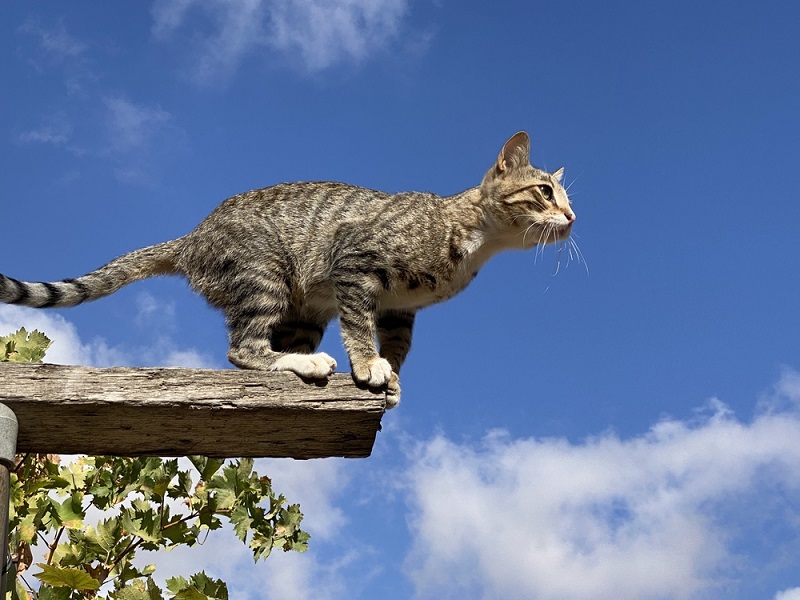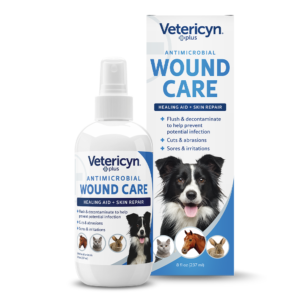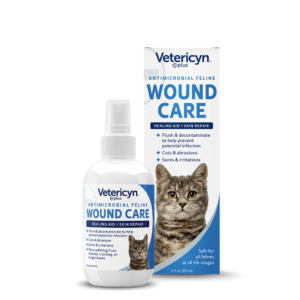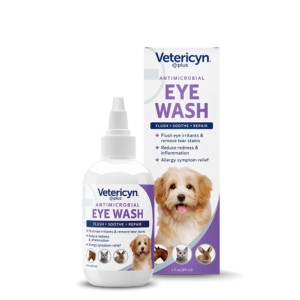Cats may seem like invincible little acrobats, but even the most graceful feline can get into trouble. Whether they’re leaping from high places, squabbling with neighborhood pets, or just getting a little too curious, cat injuries can happen occasionally.
While some scrapes and bruises are no big deal, other injuries require immediate attention. Knowing what to look for and how to respond can help keep your feline friend safe and healthy.
This guide will cover the most common cat injuries, how to spot them, and steps to take for treatment. We’ll also show you how to prevent injuries in the first place—because while cats have nine lives, we’d all prefer they use as few as possible.
Common Cat Injuries and Their Causes
Cats are naturally curious and incredibly active, which unfortunately means they are prone to a variety of injuries. Here are some of the most common ones:
Cuts and Scrapes
These can happen for several reasons: playtime gone wrong, contact with sharp objects, or even a failed jump onto a less-than-stable surface. Most minor scratches heal on their own, but deeper wounds may require cleaning, bandaging, or even stitches.
Bite Wounds
Whether from a spat with a fellow feline, an encounter with wildlife, or an overly enthusiastic dog, bite wounds can be serious.
Bites from other cats pose particular dangers. Since a cat’s mouth contains bacteria, bites can quickly lead to infections and abscesses if left untreated.1
Sprains and Strains
Cats are built for jumping, but sometimes they land awkwardly. A sprain or strain can cause limping, swelling, and discomfort. These injuries usually heal with rest, but severe cases may need veterinary attention.
Fractures and Broken Bones
If a cat falls from a great height or gets hit by a car, broken bones are a real possibility. If your cat is refusing to put weight on a limb, shows signs of pain, or has an obvious deformity, seek veterinary care immediately, as this is an emergency situation.2
Eye Injuries
Scratches to the eye, infections, or foreign objects can cause eye redness, excessive blinking, or discharge.3 Eye injuries can worsen quickly, so it’s best to consult a veterinarian as soon as possible.
Abscesses
Abscesses are painful pockets of pus that form under the skin, usually from an untreated bite or scratch.4 They can swell, burst, and even cause fever. If you notice a painful lump on your cat, it may be time for a vet visit.
Tail and Paw Injuries
A door closing too quickly, a misstep, or even a bad landing can lead to tail or paw injuries. Since cats rely on these limbs to move and play, seek veterinary care to assess and treat the damage.

Recognizing Symptoms of Cat Injuries
Cats are masters of disguise when it comes to pain, so you’ll need to be extra observant to catch and treat injuries. Some key signs that your cat might be hurt include:
- Limping or favoring one leg – This could indicate a sprain, strain, or fracture.
- Lethargy or hiding more than usual – A normally social cat that suddenly avoids contact may be in pain.
- Swelling, bruising, or warmth in an area – This could suggest an infection, abscess, or internal trauma.
- Bleeding or an open wound – Even small wounds can become infected if not properly cleaned.
- Excessive licking or biting at a spot – Excessive licking and biting in the same spot is often a sign of pain, irritation, or an open wound. If you’re wondering why your cat is so itchy, it could be due to allergies, fleas, or skin infections.
- Crying or unusual vocalization – Some cats will meow or yowl when they feel discomfort.
- Changes in eating or drinking habits – A cat that suddenly stops eating may have an injury affecting their mouth or general well-being.
By keeping an eye out for these key injury indications, you can ensure your feline friend receives the help or treatment they need.
How to Treat Minor Cat Injuries at Home
For minor injuries that don’t require a vet visit, you can take a few simple steps to help your cat heal:
- Cleaning cuts and scrapes – Use warm water and a mild antiseptic or topical pet wound spray. Gently pat the wound dry and monitor for signs of infection. Avoid covering the wound unless your cat keeps licking it excessively.
- Treating sprains and strains – Encourage rest by keeping your cat in a quiet, comfortable space. Use a warm compress on the affected area to reduce swelling. If your cat is still limping after a couple of days, consult your veterinarian.
- Handling minor eye irritations – If you suspect something is in your cat’s eye, try flushing it gently with an antimicrobial eye wash. Never use human eye drops, only vet-approved treatments. If redness or discharge persists, seek veterinary advice.
With a little TLC and careful monitoring, most minor cat injuries can heal quickly. When in doubt, it’s always better to check in with your vet to keep your cat on the road to recovery.
When to Seek Veterinary Care
Sometimes, cat injuries need more than a little at-home care. Knowing when to bring your cat to the vet will help you treat injuries swiftly and effectively.
While cats are experts at hiding pain, certain signs scream “vet visit ASAP.”
If your cat has a deep wound, heavy bleeding that won’t stop, or a visible fracture, don’t wait—head straight to the vet. Bite wounds, even if they seem small, should also raise a big red flag. Limping that lasts more than 48 hours, sudden lethargy, or any signs of breathing trouble also warrants a professional check.
Eye injuries are especially tricky—persistent squinting, redness, or discharge might indicate a scratch or something more serious that requires veterinary attention. And if your cat isn’t eating or drinking, discuss it with your vet as soon as possible.

Preventing Cat Injuries at Home and Outdoors
The best way to manage cat injuries? Stop them from happening in the first place. Cats may seem like fearless daredevils, balancing on narrow ledges and leaping off furniture like tiny parkour pros, but even agile felines can misjudge their abilities.
Let’s dive into how you can create a safer environment for your whiskered buddy, both inside and outside.
Cat-Proofing Your Home
Your home may seem harmless, but from a cat’s perspective, it’s an adventure course filled with potential hazards. Start by keeping sharp objects out of reach, like:
- Scissors
- Knives
- Broken bits of plastic
Cats are curious—anything that dangles, shines, or moves is fair game for play in their eyes.
Next, secure heavy furniture your cat might climb, like bookshelves or TVs. Cats love high perches, and while they usually stick the landing, one wrong move can lead to serious falls or crushed tails.
To satisfy their climbing cravings safely, provide sturdy cat trees, window perches, or wall-mounted shelves built specifically for feline acrobatics. Bonus: scratching posts can also save your furniture while giving your cat a safe outlet for that instinctive clawing behavior.
Creating a Safe Outdoor Environment
If your cat enjoys the great outdoors, supervision is key to preventing harm. A secure “catio” (a cat-friendly patio) is an excellent way to let them experience fresh air without facing the dangers of traffic, predators, or toxic plants.
For those who prefer a more adventurous setup, try leash training. Yes, cats can walk on leashes (with a proper harness and a bit of patience). This keeps them safe while still satisfying their curiosity.
And if your cat roams the yard freely, regularly inspect the area for sharp objects, harmful plants, or small spaces they could squeeze into and get stuck.
Preventing Cat Fights
Cats may act like cool loners, but even the toughest street cat doesn’t walk away from a brawl unscathed. Fights can lead to bites, scratches, and infections, especially abscesses.
If you have multiple cats, ensure they each have their own safe spaces (including separate food bowls, litter boxes, and cozy hiding spots) to avoid territorial spats.
Introducing a new cat? Take it slow and steady. Let them sniff each other through a closed door first, then allow short, supervised visits until they’re comfortable.
Keeping Your Cat Active but Safe
Bored cats often become mischievous, which can lead to risky behavior—like scaling curtains or ambushing your ankles.
Keep your cat entertained with interactive toys, puzzle feeders, or laser pointers to engage their hunting instincts. Wand toys that mimic birds or mice are also great ways to burn off energy while bonding with your cat.
Avoid rough play that encourages biting or scratching. Kittens especially need to learn that your hands aren’t toys. And if your cat loves to leap from high surfaces, ensure they have safe, padded landing spots. No one wants a sprained paw from a miscalculated jump.
Keeping Your Cats Safe and Healthy with Vetericyn
Cats are natural explorers—agile, independent, and sometimes downright fearless. Whether they’re scaling your curtains like a jungle gym or chasing shadows at lightning speed, their adventurous spirit makes them so lovable.
But that same boldness can also lead to trouble. As a devoted cat parent, it’s your responsibility to ensure their curiosity doesn’t land them in harm’s way. When accidents do happen (because, let’s be real, cats will always find a way to surprise us) Vetericyn is here to help with all the best cat care products.
Our safe, non-toxic pet skin care products are designed specifically for pets, making it easy to clean, soothe, and protect minor injuries at home. Keep a bottle of Vetericyn Plus Antimicrobial Wound and Skin Care on hand so you’re always ready for life’s little (or not-so-little) mishaps.
 Reviewed by dr. Kathy Adamson
Reviewed by dr. Kathy Adamson
Dr. Kathy Adamson earned her bachelor’s degree from the University of Notre Dame and her Doctor of Veterinary Medicine degree from the University of Wisconsin-Madison School of Veterinary Medicine.
She completed a one-year small animal medicine and surgery internship at the North Carolina State College of Veterinary Medicine. Alongside her studies, Kathy worked in a research lab, contributing as an author and co-author to various journal articles.
She has also pursued medical writing and editing certification through the University of Chicago Graham School. Currently, she runs KMA Veterinary & Medical Writing, a freelance medical writing company, serves as the Digital Content Manager for the Greater Chicago Area Chapter of the American Medical Writers Association, is a member of the AMWA Communications Committee, and enjoys writing about healthcare topics for people and their cherished pets.
![]() https://www.linkedin.com/in/kathyadamsondvm/
https://www.linkedin.com/in/kathyadamsondvm/
Sources:
-
- Healthline. Are Cat Bites Dangerous? https://www.healthline.com/health/cat-bite
- UrgentVet. Cat Limping: Possible Causes, Treatment & First Aid. https://urgentvet.com/cat-limping-causes-treatment-first-aid/
- UrgentVet. Conjunctivitis in Cats (Cat Eye Infections). https://urgentvet.com/conjunctivitis-in-cats
- Healthline. What Causes a Skin Abscess? https://www.healthline.com/health/skin-abscess


